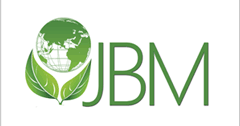Estimation of Chromium in Soil-Plant-Animal Continuum: A Case Study in Ruminants of Punjab, Pakistan
Abstract
The increased use of waste water for agriculture purposes has increased around the globe. There are toxic metals present in waste water which affect plants, animals and human health. But at the same time it also contains useful nutrients which increase growth of plants. Different indices were applied to evaluate the metals present in water soil plant and milk. Various and correlation were determined with the help of SPSS, mean significance was found at the probability levels of 0.05, 0.001 and 0.01. The highest value of Cr was found in Avena sativa (0.7872 mg/kg) collected from site 5 while lower concentration of Cr was observed in Brassica campestris (0.0743 mg/kg) at site 4. In soil samples, Trifolium alexandrinum showed highest value of Cr (0.9887 mg/kg) at site 1 while lowered concentration was observed in Zea mays (0.1862 mg/kg) at site 3. Milk samples of site 5 had higher value of Cr (0.2898 mg/kg) and lowest at (0.1540 mg/kg) site 2. Water samples of site 3 had high value of Cr in them (1.849 mg/kg) and lowered concentration was found in water samples of site 5 (0.219 mg/kg). Cr concentration in fodders ranges from 0.0743 to 0.7872 mg/kg, soil 0.1862 to 0.9887 mg/kg, milk 0.1540 to 0.2898 mg/kg and water 0.219 to 1.849 mg/kg. In water samples, Cr level were above than permissible limit. In milk samples, concentration of Cr was greater than permissible limit which shows that it is hazardous to human health, may be due to pollution of environment like air, water and soil. This study concluded that if animals are allowed to graze on contaminated fodders and drink wastewater then metals were accumulated in their tissues and milk which causes toxicity to human health.
Article History
Received: May 05, 2021; Accepted: June 25, 2021; Published: March 24, 2022
Recommended Citation
Ahmad, K.,
Khan, Z.,
Nazar, S.,
Malik, I.,
Ashfaq, A.,
Munir, M.,
Bashir, H.,
Muhammad, F.,
Akhtar, S.,
Nadeem, M.,
Mehmoud, S.,
Awan, M.,
Akhtar, M.,
& Mahpara, S.
(2022).
Estimation of Chromium in Soil-Plant-Animal Continuum: A Case Study in Ruminants of Punjab, Pakistan,
Journal of Bioresource Management, 9
(1).





